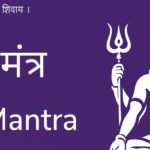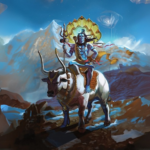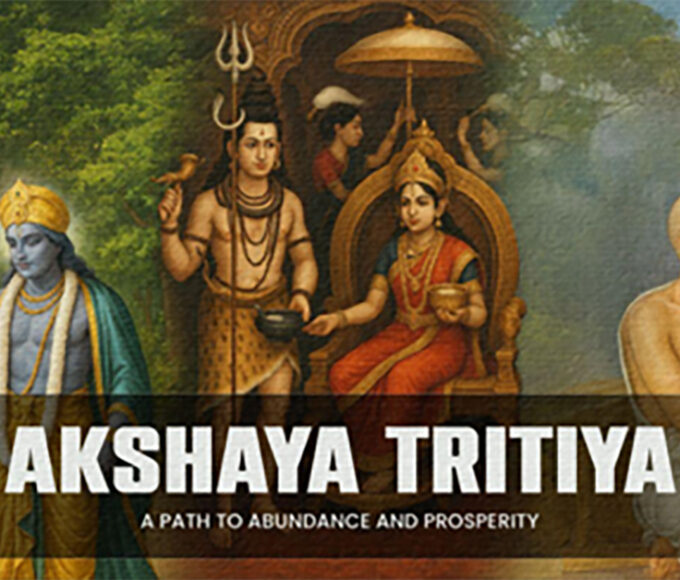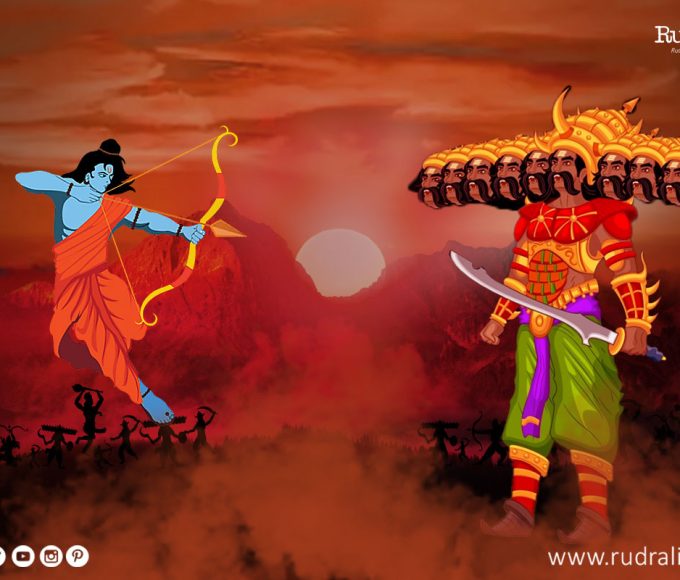Ganesh Chaturthi, also known as Vinayaka Chaturthi or Ganeshotsav, is a significant Hindu festival that celebrates the birth of Lord Ganesha, the elephant-headed deity. Lord Ganesha is venerated as the remover of obstacles, the patron of arts and sciences, and the deva of intellect and wisdom. He is also known by various names, including Ganapati, Vinayaka, and Vighnaharta.
The Significance of Ganesh Chaturthi
Ganesh Chaturthi holds a profound meaning in Hindu culture. It symbolizes the arrival of wisdom, knowledge, and new beginnings, as the name “Ganesha” is derived from the Sanskrit words “Gana,” meaning group or collection, and “Isha,” meaning lord or master. Lord Ganesha is believed to be the son of Lord Shiva and Goddess Parvati, and his unique form, with an elephant’s head and a human body, represents the unity of wisdom and strength, as well as the value of humility.
Dates and Auspicious Timings for Ganesh Chaturthi 2023
Lord Ganesha’s birth anniversary falls in the Gregorian months of August or September, aligning with the Shukla Paksha of the Bhadrapada month in the Hindu calendar. In the year 2023, Ganesh Chaturthi will be celebrated on Tuesday, September 19th, and Ganesh Visarjan, the ritual of immersion, will take place on the 10th day, which is Thursday, September 28th, 2023.
Key Dates for Ganesh Chaturthi in 2023:
- Ganesh Chaturthi: Tuesday, September 19, 2023
- Ganesh Visarjan: Thursday, September 28, 2023
According to the Drik Panchang, the auspicious Chaturthi tithi for the 10-day Vinayak Chaturdashi festival in 2023 begins at 12:39 pm on Monday, September 18th, and concludes at 01:43 pm on Tuesday, September 19th, 2023. Moreover, the Madhyahna Ganesha Puja Muhurat commences at 11:01 am and extends until 01:28 pm, lasting for a duration of 02 hours and 27 minutes.
Tithi Timings for Ganesh Chaturthi in 2023:
- Chaturthi Tithi Begins: 12:39 pm on September 18, 2023
- Chaturthi Tithi Ends: 01:43 pm on September 19, 2023
These timings are essential for devotees to plan their rituals, prayers, and celebrations in accordance with the auspicious moments during Ganesh Chaturthi.
Aspects of Lord Ganesha
Lord Ganesha governs all the atoms and energies in the universe, serving as the supreme consciousness that brings order to the chaos of existence. Three vital aspects of Lord Ganesha are:
Achintya: Beyond thought
Avyakta: Beyond expression
Ananta: Eternal
One of Lord Ganesha’s many names is Ekdanta, derived from “Ek” meaning one and “Danta” meaning tooth. Ekdanta refers to Lord Ganesha’s unique characteristic of having only one tusk or tooth.
Numerous legends surround the reason for Lord Ganesha’s single tusk. A widely known tale suggests that Ganesha broke his tusk while guarding his mother’s privacy. In this encounter, Lord Shiva, attempting to enter Goddess Parvati’s chambers, was stopped by Ganesha, leading to a scuffle and the loss of Ganesha’s tusk. Another legend indicates that Ganesha broke his tusk to transcribe the Mahabharata when Sage Vyasa requested it. Ekdanta symbolizes Ganesha’s sacrifice, wisdom, and ability to overcome obstacles.
The Essence of Lord Ganesha
Though Lord Ganesha’s elephant-headed form is visually striking, his true essence transcends physical appearance. Adi Shankara aptly describes Ganesha as “Ajam Nirvikalpam Niraakaaramekam,” signifying that he is unborn (Ajam), attributeless (Nirvikalpa), and formless (Niraakaar). These qualities represent the omnipresent and all-pervading consciousness.
In essence, Ganesha embodies the energy responsible for creating and sustaining the universe. Worshipping Ganesha acknowledges the Divine power that governs and sustains life.
The Birth Story of Lord Ganesha
The story of Lord Ganesha’s birth explains the origin of his elephant head. According to the legend, Goddess Parvati created a boy from the dirt on her body while celebrating with Lord Shiva. She asked the boy to guard the door while she bathed.
Upon his return, Lord Shiva did not recognize the boy and beheaded him in anger. Parvati revealed that the boy was their son and implored Shiva to resurrect him. Shiva ordered his helpers to find the head of a being sleeping with its head pointing north. They brought the head of an elephant, and Shiva affixed it to the boy’s body, giving rise to Lord Ganesha.
This story underscores the importance of communication, understanding, divine intervention, and Ganesha’s role as a remover of obstacles and patron of new beginnings.
Interesting Insights into the Birth Story
Significance of Parvati’s dirt: Parvati becoming dirty symbolizes that celebrations can become feverish and take one away from their center, reflecting the concept of ignorance.
Shiva’s action: Shiva’s act of beheading Ganesha symbolizes knowledge overcoming ignorance, as ignorance does not recognize knowledge.
Elephant head symbolism: Lord Ganesha’s elephant head symbolizes qualities like fearlessness, authority, strength, courage, and a perfect balance between knowledge and action.
Symbolism and Significance of Lord Ganesha
Lord Ganesha’s physical form and symbols hold deep spiritual meanings and life lessons:
Big belly: Represents generosity and the acceptance of all life experiences, whether sweet or sour.
Upraised hand: Depicts protection and reassurance to devotees, inviting surrender and signifying “Fear not, I am with you.”
Single tusk: Symbolizes one-pointed focus and the importance of retaining the good while rejecting the bad.
Ankusa and Paasa: Represent awakening and control, respectively. Control over spiritual awakening is crucial to prevent energy from going astray.
Mouse as his vehicle: Symbolizes the mind and its tendencies. The mouse’s ability to break free signifies the power of the mantra, cutting through ignorance to attain knowledge.
Eight holy temples of Lord Ganapati
Just as there are twelfth Jyotirlingas for the worship of Lord Shiva & 51 Shakti peeths for the worship of Shakti, in the same way there are eight holy shrines of Lord Ganapati, which are called Ashtavinayak. All these eight holy places of Lord Ganpati are located in Maharashtra.
1. Mayureshwar Temple, Pune
This holy shrine of Ganpati is situated at a distance of about 75 km from Pune city. It is believed that Lord Ganesha killed a demon named Sindhurasur riding on a peacock at this place, hence this temple is called Mayureshwar.
2. Siddhivinayak Temple, Ahmednagar
This holy shrine of Ganapati is situated on the banks of Bhima river in Ahmednagar, Maharashtra. It is believed about this Siddha temple of Ganapati, built on the top of the mountain, that Lord Vishnu had attained siddhis at this holy place once. One has to travel a mountain to circumambulate this temple of Ganapati.
3. Ballaleshwar Temple, Pali
This Siddha temple of Ganapati is situated at a place called Pali in Colaba district of Maharashtra. This temple of Ganapati is named after his exclusive devotee Ballal. In the Ballaleshwar Ganapati temple, the rays of Lord Sun fall directly on his idol in the morning.
4. Varadvinayak Temple, Raigad
The Varadvinayak Temple of Lord Ganesha is located at a place called Kolhapur in Raigad. It is believed that every person who visits this temple of Ganpati gets a boon of fulfillment of his wishes.
Also read-: Top 10 Lord Shiva Temples in India that every devotee must visit once
5. Chintamani Temple, Pune
This temple of Lord Ganesha, who defeats all the worries of his devotees, is located in Theur village, 25 km from the city of Pune in Maharashtra. This temple was established by his great devotee Morya Gosavi.
6. Girijatmaj Ashtavinayak Temple, Pune
This Siddha temple of Lord Shri Ganesh is situated in Lenyadri village at a distance of about 100 km from Poona. The Girijatmaj temple has been built by excavating the mountain.
7. Vigneshwar Ashtavinayak Temple, Ozar
The temple of Lord Vigneshwar is located in Junar area of Ozar district, about 85 km from Pune. It is believed that Ganapati had once blessed the people of this region to live in peace by killing a demon named Vighnasur. The darshan of this idol of Lord Ganapati removes all obstacles.
8. Maha Ganapati Temple, Rajangaon
Mahaganpati Temple is located at a distance of 55 km from Pune in Rajangaon. This temple of Ganapati is quite ancient, which is believed to be between the ninth to the tenth century. Here Ganapati is also known as Mahottakat.
Rudraksha related to Lord Ganesha
8 Mukhi Rudraksha
Eight Mukhi Rudraksha is blessed by Lord Ganesha. As per Shastras, wearing the 8 Mukhi Rudraksha is believed to bring victory in life and transform the mindset of adversaries. The bead enhances analytical and logical skills, removes obstacles, and ensures the successful completion of work. It is also known to offer protection from invisible enemies and hostile forces, thus ensuring a hurdle-free existence and leading to definite success. Additionally, wearing this Rudraksha is said to enable the wearer to emerge as a true winner.
Ganesh Rudraksha
The Ganesh Rudraksha is identified by the trunk-like stem present on the bead and is known to bestow its wearer with the grace of Lord Ganesha, according to the Shastras. This Rudraksha is believed to remove obstacles, bring good fortune and prosperity, and bless the wearer to initiate new endeavors. It acts as a guide and provides blessings in all aspects of life. Since Lord Ganesh is the deity of wisdom and intellect, it is considered beneficial for students based on the feedback received from our customers.
Rahu and Ganesha – The Battle of Obstacles
Rahu, considered malevolent in Hindu astrology, is believed to create obstacles and challenges, causing stress and anxiety in one’s life. In contrast, Lord Ganesha is revered as the remover of obstacles and the God of new beginnings.
Performing rituals and prayers to Lord Ganesha during the Rahu Kaal, a specific time dedicated to Rahu, can mitigate the malefic effects of Rahu. This enmity between Rahu and Lord Ganesha originates from a tale in which Rahu attempted to consume the nectar of immortality during the churning of the ocean (Samudra Manthan). Lord Vishnu thwarted Rahu’s efforts by decapitating him with his Sudarshan Chakra. However, Rahu had already consumed the nectar, rendering him immortal. This incident led to Rahu’s grudge against Lord Vishnu and his avatars, including Lord Ganesha.
In essence, Lord Ganesha is seen as the solution to overcoming the obstacles and challenges posed by Rahu, emphasizing the importance of divine intervention and seeking blessings to navigate life’s hurdles.

















Leave a comment